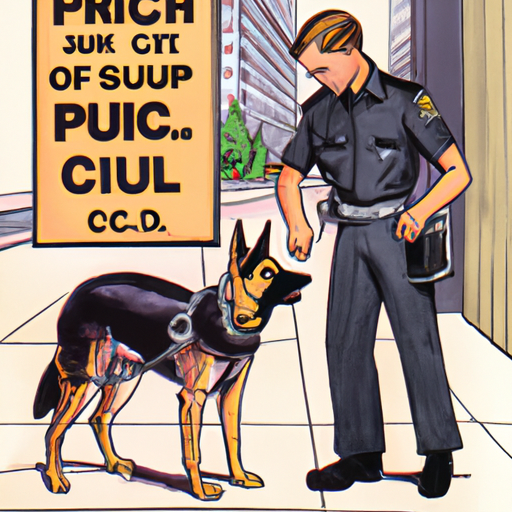As you stroll down the streets of your city and spot a police dog, stealthily smelling around, you might have wondered about the cost involved in training and maintaining these remarkable animals. After all, they aren’t your regular pets; they’re highly-trained professionals with a job to secure and protect. So, exactly how much do police dogs cost? Let’s delve into the details.
Table of Contents
- Understanding the Role of Police Dogs
- Cost of Police Dogs: A Breakdown
- Factors Impacting the Cost of Police Dogs
- Maintenance Costs of Police Dogs
- Frequently Asked Questions
Key Takeaways:
– Police dogs are a significant investment, with initial costs ranging between $8,000 and $40,000.
– The cost of a police dog varies according to the breed, training, and the dog’s specific role.
– Maintenance costs for these dogs, including food, veterinary care, and equipment, can also be substantial.
Understanding the Role of Police Dogs
Before we dig into the numbers, it’s essential to understand the role these dogs play in law enforcement. Police dogs, also known as K9 units, are trained to assist in various tasks, including drug and explosives detection, search and rescue, and apprehending criminals. The National Police Dog Foundation provides an insightful look at the myriad tasks these dogs accomplish.
Cost of Police Dogs: A Breakdown
So, let’s get to the meat of the matter – how much do police dogs cost? Well, the purchase price for a police dog can range anywhere between $8,000 and $40,000, depending on the breed and the level of training the dog has undergone. However, this is just the tip of the iceberg. The cost of their specialized training, which can last up to 14 weeks, adds to this figure significantly.
Take a look at this table for a clearer understanding:
| Police Dog Expenses | Cost |
|---|---|
| Purchase Price | $8,000 – $40,000 |
| Initial Training | $15,000 – $20,000 |
| Annual Maintenance | $1,000 – $3,000 |
Factors Impacting the Cost of Police Dogs
The cost of a police dog can vary significantly due to several factors:
1. Breed: Certain breeds, such as German shepherds, Dutch shepherds, and Belgian Malinois, are favored for police work, and their cost reflects this demand.
2. Training: The type and level of training the dog has undergone also impact the cost. For example, a dual-purpose dog trained in both patrol and detection will be more expensive than a single-purpose dog.
3. Dog’s Role: Dogs trained for specialized roles, like bomb detection or search and rescue, might cost more due to the extensive and specific training involved.
You can find more information about the different roles of police dogs in this article on One Top Dog.
Maintenance Costs of Police Dogs
Beyond the initial investment, the ongoing maintenance costs for police dogs, including food, veterinary care, and equipment, are also substantial, typically ranging between $1,000 and $3,000 annually. These costs can increase depending on the dog’s health and the wear and tear of equipment.
Frequently Asked Questions
1. Who pays for the police dogs?
Police dogs are typically funded by the police department’s budget, but they also receive significant support through community donations and non-profit organizations like the National Police Dog Foundation.
2. How long do police dogs serve?
Police dogs usually serve between 6 and 9 years, but this can vary depending on the dog’s health and job demands.
3. What happens to police dogs after they retire?
Many retired police dogs are adopted by their handlers. Otherwise, they are placed in loving homes where they can enjoy a well-deserved peaceful retirement.
By now, you should have a good understanding of how much police dogs cost and the various factors contributing to their price tag. While the investment is significant, the value these dogs bring to our communities in terms of safety and security is immeasurable. To learn more about police dogs, their training, and their roles, explore additional resources on One Top Dog.



